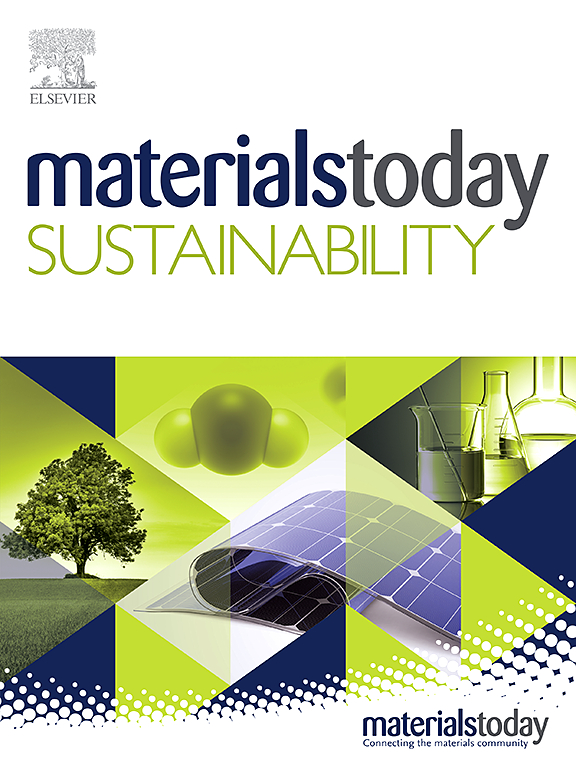Refurbished zinc manganese oxides from waste batteries as a supercapacitor asymmetric cell: A second life to battery waste
IF 7.1
3区 材料科学
Q1 GREEN & SUSTAINABLE SCIENCE & TECHNOLOGY
引用次数: 0
Abstract
Alkaline Zn/C batteries are major market players in the portable battery sector that produce an overwhelming amount of waste which is a major cause of soil contamination. These batteries, however, contain metal compounds of relevance, whose recycling enables an important source of raw materials for new electrochemical energy storage devices. However, novel recycling solutions require the development of simple pathways to deliver ready-to-use active materials for immediate application in energy storage systems, thus contributing towards waste revalorization and circular economy development.
In this work, an asymmetric supercapacitor cell assembled with electrodes made of recycled Zinc–Manganese oxide and commercial carbon YP50, was tested in Na2SO4 electrolyte. The results evidenced an exceptional cycling stability over 5000 cycles with 91% long-term capacitance retention, a high capacitance of 12.9 F/g (1 A/g) and a power density of 4.12 kW/kg (10 A/g), with 88% high-rate capability. The electrodes made with the recovered materials were fully characterized using 3D electrochemical impedance spectroscopy (EIS) mapping to detail the mechanisms governing the electrochemical response of the cell. This approach evidenced a surface-based pseudocapacitive mechanism where the charging process dictates the overall performance of the cell. The excellent performance of the recycled materials will certainly encourage circular economy and future waste-recovery initiatives, aiding in the sustainable development of future energy storage materials.

废电池再生锌锰氧化物作为超级电容器不对称电池:废电池的第二次生命
碱性锌/C电池是便携式电池领域的主要市场参与者,产生大量的废物,这是土壤污染的主要原因。然而,这些电池含有相关的金属化合物,其回收为新的电化学储能装置提供了重要的原材料来源。然而,新的回收解决方案需要开发简单的途径来提供即时应用于储能系统的即用活性材料,从而有助于废物的再增值和循环经济的发展。在这项工作中,在Na2SO4电解质中测试了一个由回收锌锰氧化物和商业碳YP50制成的电极组装的不对称超级电容器电池。结果表明,该电池在5000次循环中具有优异的循环稳定性,长期电容保持率为91%,高电容为12.9 F/g (1 a /g),功率密度为4.12 kW/kg (10 a /g),具有88%的高倍率能力。利用三维电化学阻抗谱(EIS)对回收材料制成的电极进行了全面表征,详细描述了控制电池电化学响应的机制。这种方法证明了一种基于表面的伪电容机制,其中充电过程决定了电池的整体性能。再生材料的优异性能肯定会鼓励循环经济和未来的废物回收倡议,有助于未来储能材料的可持续发展。
本文章由计算机程序翻译,如有差异,请以英文原文为准。
求助全文
约1分钟内获得全文
求助全文
来源期刊

Materials Today Sustainability
Multiple-
CiteScore
5.80
自引率
6.40%
发文量
174
审稿时长
32 days
期刊介绍:
Materials Today Sustainability is a multi-disciplinary journal covering all aspects of sustainability through materials science.
With a rapidly increasing population with growing demands, materials science has emerged as a critical discipline toward protecting of the environment and ensuring the long term survival of future generations.
 求助内容:
求助内容: 应助结果提醒方式:
应助结果提醒方式:


